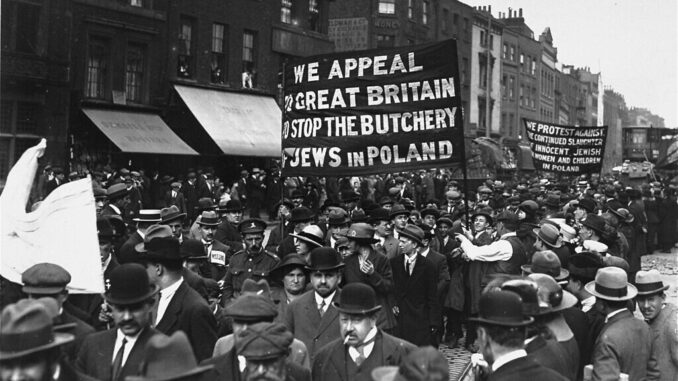‘In the Midst of Civilized Europe’ by Jeffrey Veidlinger revisits the brutal violence in 1918-1921 that portended a genocide of Europe’s Jews, and was soon overshadowed by it
By RICH TENORIO, TOI

In the early 1920s, thousands of Jewish child refugees flooded into Moscow from Ukraine, fleeing a terrifying series of pogroms. Legendary Jewish artist Marc Chagall remembered giving art lessons to some of the refugees at a Jewish orphanage outside the Soviet capital. He recalled the horrifying atrocities they spoke about — their parents murdered, their sisters raped and slain, and the children themselves chased out in the cold, threadbare and starving.
Unlike the Holocaust, this earlier wave of antisemitic violence has largely been forgotten by history. Yet at the time, it was front-page news. From 1918 to 1921, more than 1,100 pogroms killed over 100,000 Jews in an area that is part of present-day Ukraine. Such large-scale violence led to fears that six million Jewish lives across Europe were at risk from antisemitic hate. Those who made such dire predictions included writer Anatole France; less than 20 years later, these fears were realized.
The story of these fateful pogroms is chronicled in a new book, “In the Midst of Civilized Europe: The Pogroms of 1918-1921 and the Onset of the Holocaust,” by University of Michigan history and Judaic studies professor Jeffrey Veidlinger.
“I think right now they’re not very well-known at all, mostly because they’ve been so surpassed by the Holocaust,” Veidlinger told The Times of Israel in a phone interview. “In the interwar period, they were very well-known. In some ways, it seems like it was all anybody was writing about then.”
Rooted in a previous linguistic research project with elderly Yiddish-speaking Jews in Ukraine who told Veidlinger about surviving the pogroms, the book takes readers back to this disturbing moment in history during the Russian Civil War.
“It’s terrifying and horrifying,” Veidlinger said. “It takes a toll on you to write [down] that testimony. I’m sure it takes a toll on the reader… It was difficult for me to hear, and probably difficult for them to tell.”
The title phrase comes from France’s fears for the future of European Jewry. The French poet and journalist noted that some of the pogroms occurred at the same time as the peace talks at Versailles tasked with ending World War I. One was perhaps the largest single mass murder of Jews in modern history up to that point — the pogrom of Proskuriv on February 14, 1919, with 911 listed deaths, which Veidlinger estimates is one-third of the actual total.
“I think it was almost genocidal,” Veidlinger said of the Proskuriv pogrom. “It shows how the violence escalated during the very short period of time between November 1918 to February 1919.”



Leave a Reply
You must be logged in to post a comment.